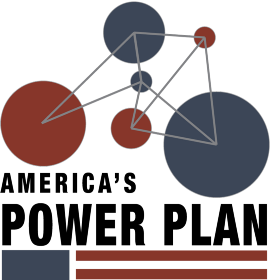
Game‐changing new technologies; consumer demand for cleaner, more efficient energy; an aging and increasingly obsolete grid; dramatic reduction in the cost of renewable sources of energy: These are among the many forces radically reshaping America’s electricity sector. A new era is dawning, and analysts agree we are at a pivotal moment in America’s energy history. Decisions and investments made in the next decade will shape the course of the power industry, the economy and public health for decades to come.
Will legal, economic, and regulatory structures designed for the last century continue to thwart innovation and constrain consumer demand? Will $100 billion per year in needed infrastructure investments lock in business as usual, or foster innovation?
America’s Power Plan (APP)—a toolkit for state and local decision-makers developed by over 150 of the nation’s top energy experts—is the first national effort to take a comprehensive look at the challenges faced by the electric power system and outline potential policy and market design solutions.
Launched in late 2013, APP and its expert advisers offer innovative recommendations on utility business models, finance, distributed generation, distributed energy sources, market design, transmission, and siting. Their ideas have sparked discussions among state, county, and municipal decision-makers—those who know best how to tailor the recommendations for local realities.
Andy Karsner, CEO of Manifest Energy and former Assistant Secretary for Energy Efficiency and Renewable Energy under President George W. Bush, says APP “started an important and timely discussion, mapping a path forward that should be considered by every serious utility executive and PUC commissioner across the country.”
The project was inspired by a number of studies that show a high-renewable future is technically feasible, and by real-world experience in parts of the world that are already seeing high levels of wind and solar.
To learn more about APP, visit the website, follow the APP blog or tweets, ask the experts questions, or sign up for the newsletter.
